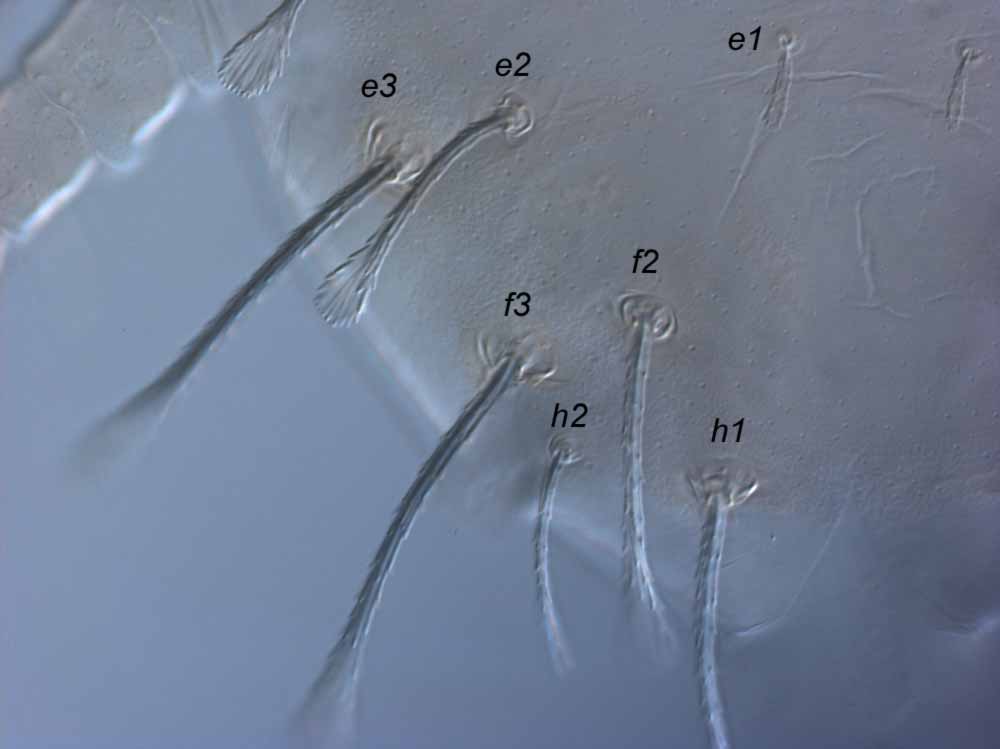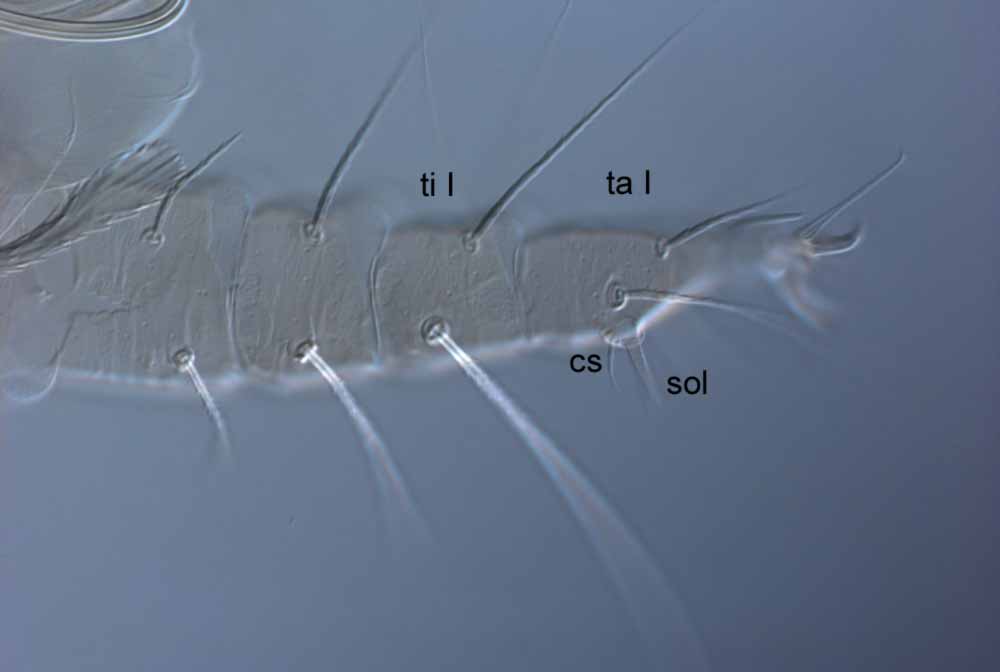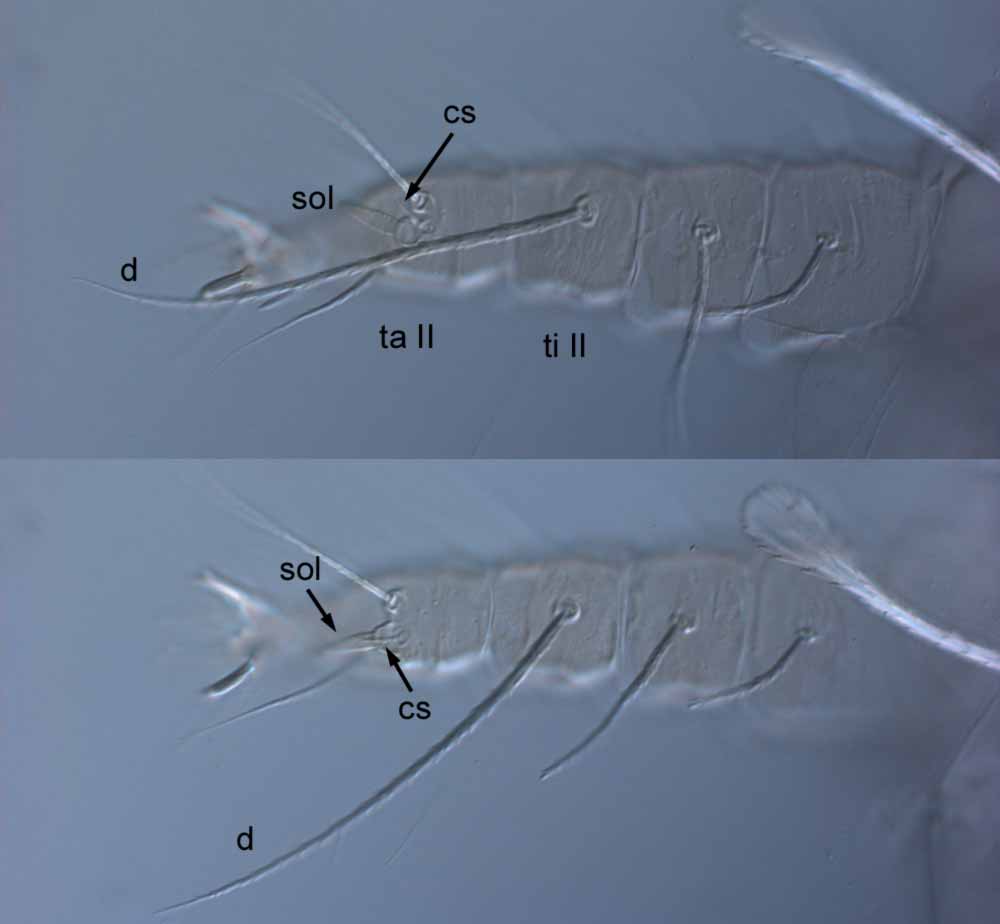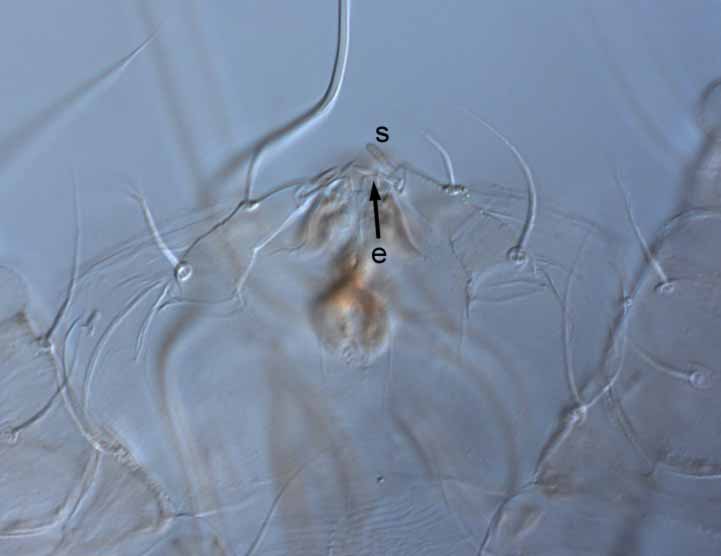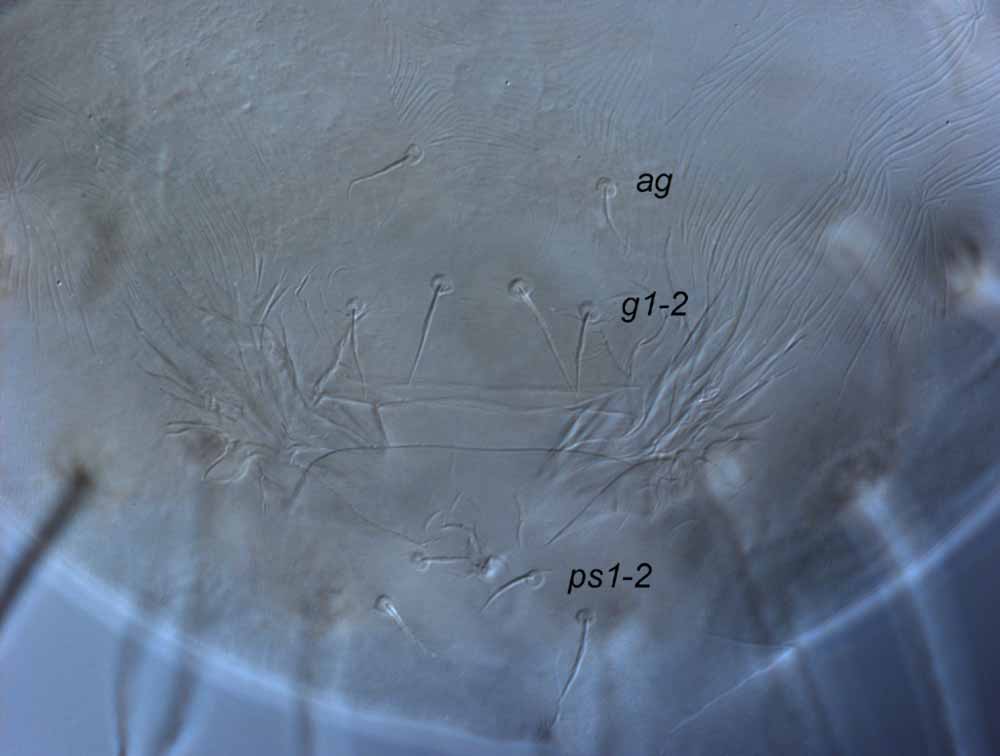Raoiella goyderi
|
Fig. 1. Raoiella goyderi adult female dorsum. |
|
Fig. 2. Raoiella goyderi adult female anterior lateral opisthosoma. |
|
Fig. 3. Raoiella goyderi adult female posterior lateral dorsum. |
|
Fig. 4. Raoiella goyderi adult female leg I (sol = solenidion; cs = companion seta; ta I = tarsus I; ti I = tibia I). |
|
Fig. 5. Raoiella goyderi adult female leg II (sol = solenidion; cs = companion seta; d = dorsal seta on tibia with tapered tip; ta I = tarsus I; ti I = tibia I). |
|
Fig. 6. Raoiella goyderi adult female palp (s = solenidion; e = eupathidium). |
|
Fig. 7. Raoiella goyderi adult female posterior venter (g = genital setae; ag = aggenital setae). |
|
Fig. 9. Raoiella goyderi adult male posterior dorsum (indicating ps1 setae). |
Authority
Ochoa and Beard
Key characters
- setae c1, d1, e1 weakly spatulate to thick tipped (Figs. 1, 2)
- seta h1 longer than h2 (Fig. 3)
- seta h2 weakly spatulate (Fig. 3)
- seta f2 shorter than f3 (Fig. 3)
- coxae III-IV nude
- femur II with 4 setae (d, l', bv", v')
- genua I-II with 2 setae (d, l' present; l" absent)
- tarsi I-II with companion seta obviously shorter than solenidion (Figs. 4, 5)
- dorsal seta on tibiae I-II setiform, with tapered tip (Fig. 5)
- palp tibiotarsus with one solenidion and one blunt eupathidium distally (Fig. 6), and one seta dorsally
- setae ps1 and ps2 inserted adjacent to each other (Fig. 7)
- male with long ps1 setae, 18-21 microns (Fig. 8)
- male femur II and genua I-II same as female
- larva with setae h2 short, not elongate or filiform
Similar species
Raoiella goyderi is similar morphologically to Raoiella bauchani.
Raoiella goyderi: opisthosomal setae f2 shorter than f3.
Raoiella bauchani: opisthosomal setae f2 subequal in length with f3.
Distribution
Australia (NT)
Hosts
Milky box, Lophostemon lactifluus (Myrtaceae)
Remarks
This species is placed in the bauchani species group proposed by Beard et al. (2018).
Listed as species 5 in Beard et al. (2012) and Dowling et al. (2012).
Collected from monsoon forest south of Darwin, Northern Territory.
References
Beard et al. (2012); Beard et al. (2018); Dowling et al. (2012)



